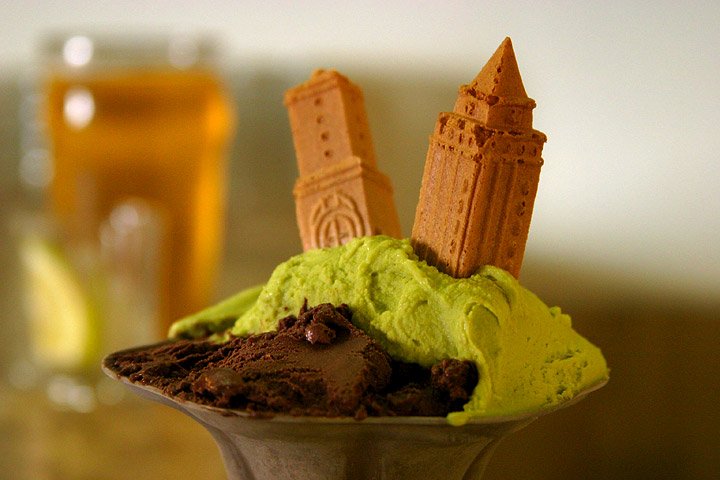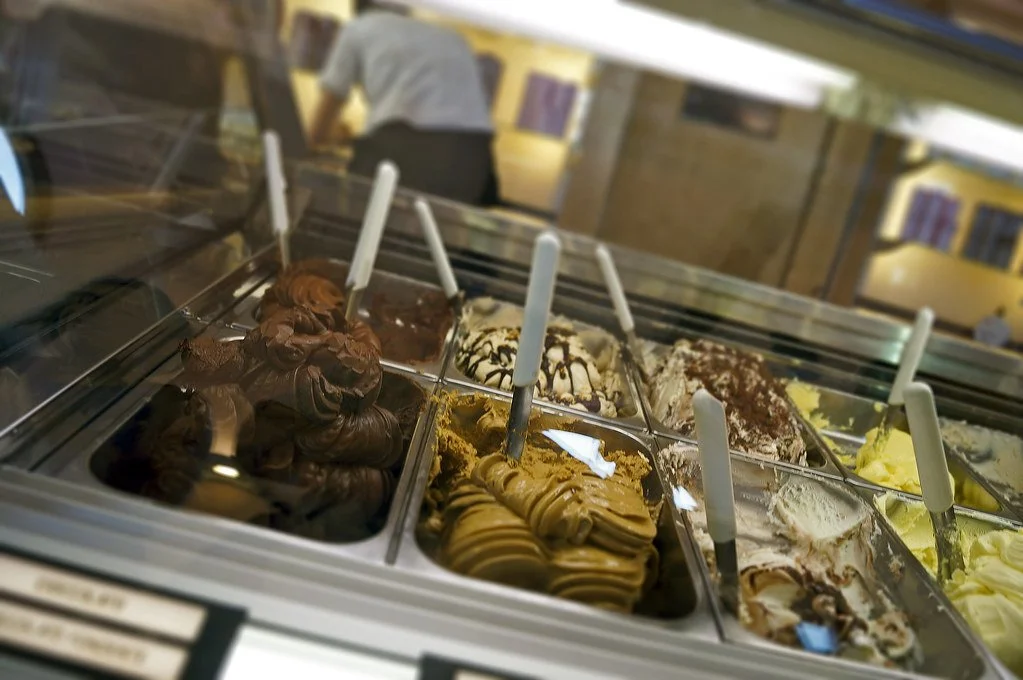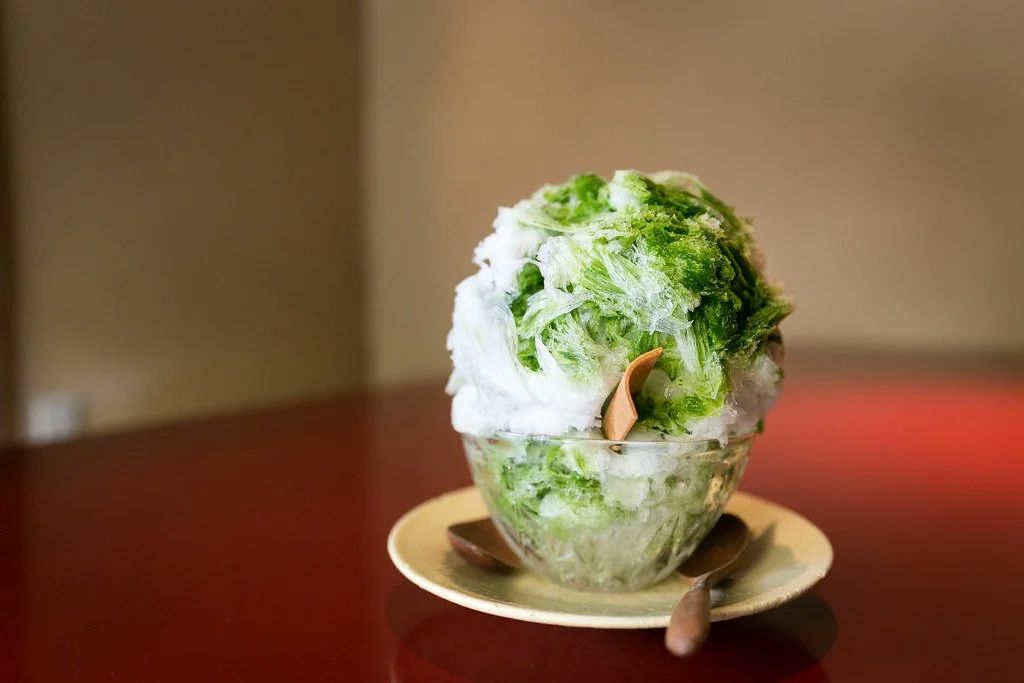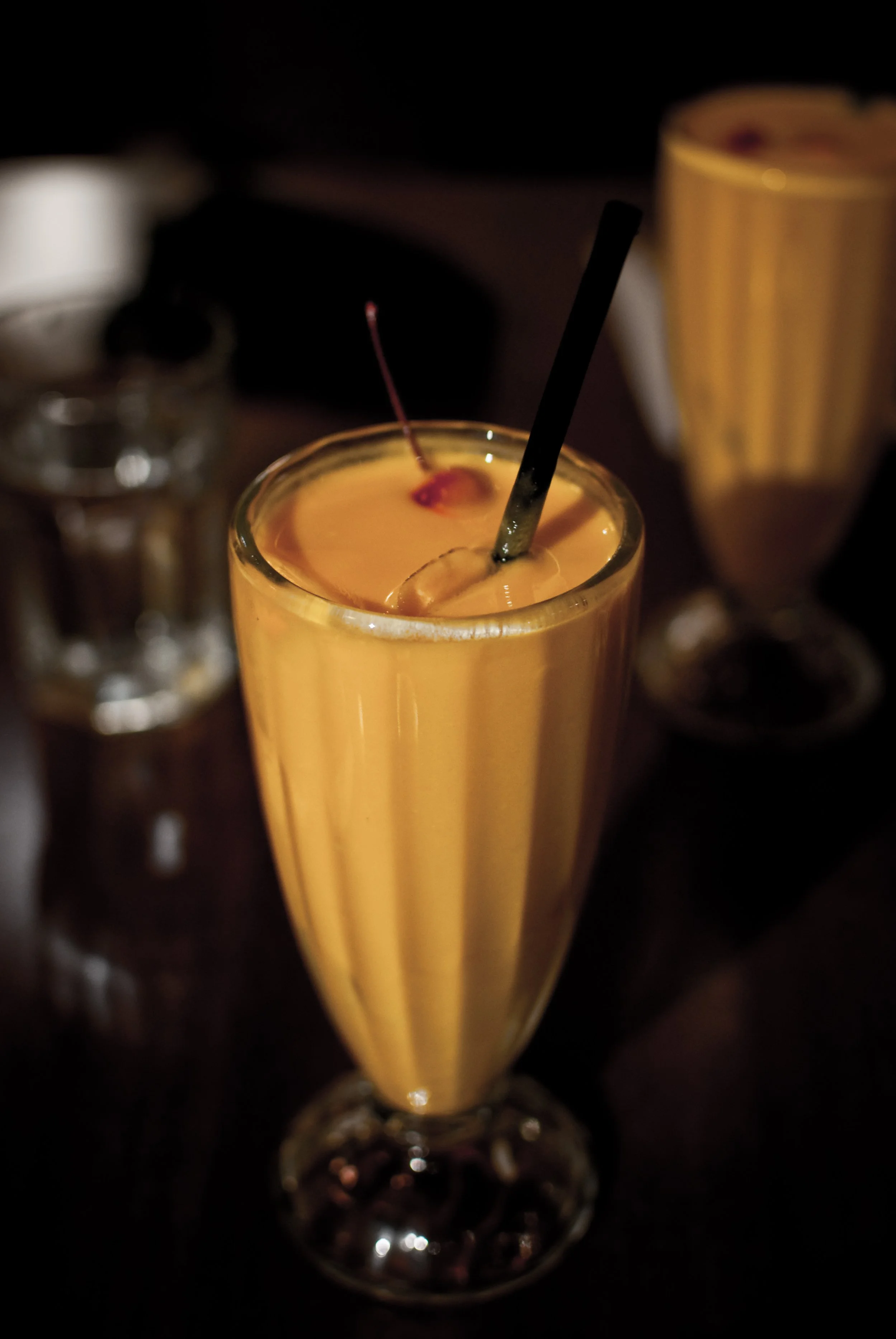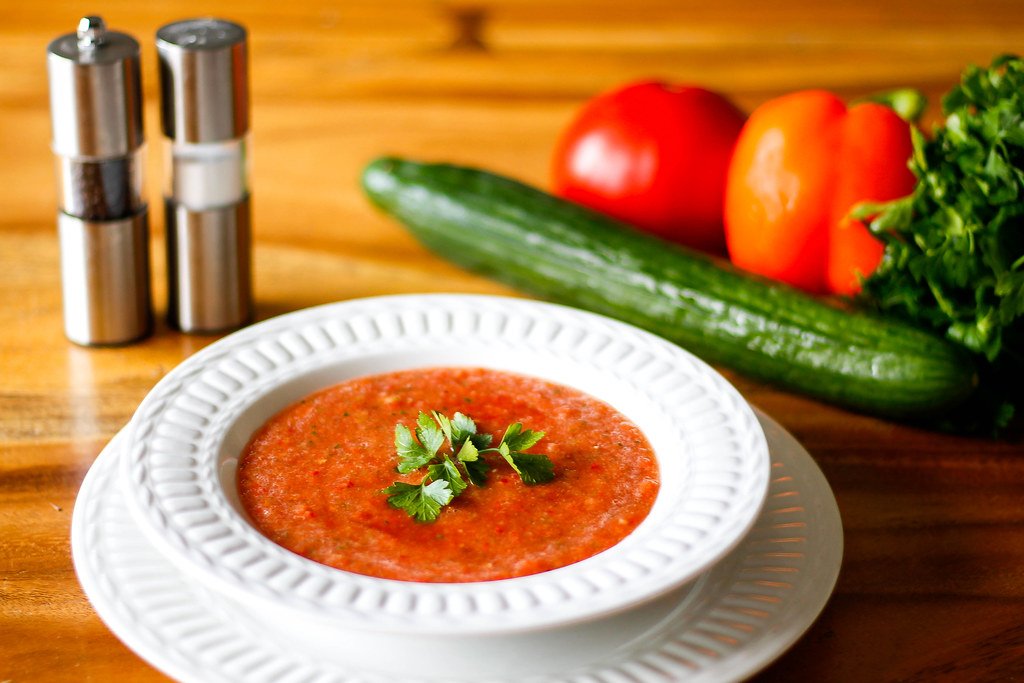See how diverse culinary traditions have responded to scorching weather.
Ice Cream. Stevepb. CC0.
As summer enters its dog days, it is not uncommon for people to seek sanctuary within the cool confines of air conditioned rooms. Another strategy trades atmospheric meddling for culinary delights — beating the heat through the sheer pleasure of cool, refreshing dishes. While the temptation of piping hot meals, freshly baked and steaming, is undeniable, the relentless heat can dampen our enthusiasm to partake in such feasts. This is precisely where the enchanting world of chilled cuisine steps in, ready to satiate our taste buds when summer overwhelms the northern hemisphere. Join us as we delve into this captivating culinary realm of cold delights.
1. Gelato—Italy
Roman Gelato. Aaron Logan. CC BY 2.0.
When it comes to chilly delights, there's a particular taste that's impossible to miss — sweetness. Picture yourself relishing an assortment of ice cream flavors, skillfully combined with frozen fruits, cream, and sugar, once you've completed an exciting adventure at a theme park that leaves your T-shirt saturated with sweat. Scientifically, it has been established that the consumption of sweetness amplifies dopamine levels, thus it's only logical for people around the world to use frozen confections to conquer the scorching heat.
The origins of relishing icy delights on sweltering summer days can be attributed to ancient times, when Arabians devised a method of combining snow with syrups to combat the scalding temperatures. It was through the travels of an Arab trader that this innovative recipe found its way to Italy, where it underwent further refinement with the addition of dairy, fruit juice, and sugar. This culinary transformation ultimately led to the creation of Gelato, a frozen delight that has become a firm favorite among Italians, its name simply meaning “frozen” in Italian.
Gelato with multiple flavors. Bruce Stokes. CC BY-NC-SA 2.0.
While Gelato has a long history, dating back to the 16th century when an Italian inventor first served it at the table of the Spanish King, its global recognition came about during the industrialization of food production, including ice cream, during World War II. It was during this time that Gelato gained widespread popularity. In 1940, a breakthrough occurred with the invention of a new gelato machine by technician and designer Bruto Carpigiani. This innovation transformed gelato from a homemade, artisanal treat to one of the most beloved deserts worldwide.
To truly experience the authentic taste of Gelato, it is important to appreciate the differences between it and similar frozen delicacies you may be more familiar with. In contrast to American ice cream, good Gelato contains less milk fat and incorporates less air, resulting in a denser and creamier texture. Additionally, although the desert is known for its vibrant colors, it is worth mentioning that Gelato made with fresh fruit tends to have a more natural hue. For instance, a pistachio Gelato should have a delicate brown shade instead of a bright green color.
2. Kakigori—Japan
Matcha Awayuki Kakigori. City Foodsters. CC BY 2.0.
In Japan, frozen sweet desserts take on a unique form in the dish known as Kakigori. These towering mounds of shaved ice, generously adorned with a variety of fruit syrups like strawberry, melon and lemon, and garnishes that can be whole deserts in themselves such as mochi and sweetened red beans, offer a delightful crunchiness that sets them apart from Western ice cream. Resembling freshly fallen snow in texture, Kakigori has become an essential part of the Japanese summer dinner table.
The history of Kakigori can be traced back a thousand years, as it finds mention in classic Japanese literature. According to the renowned author Sei Shonagon, in a time before refrigeration, people would diligently gather fresh snow and ice during the winter season, carefully preserving it in specially designed storehouses. They would then transform this frozen treasure into delightful icy treats during the scorching summer months. What was once a highly valued luxury has in modern times become a spoonful of joy accessible to the masses. Today, Kakigori is commonly served in bowls, allowing for a generous amount of toppings and syrups to be piled high, eagerly savored with a spoon.
3. Air Mata Kucing—Malaysia
Longan Drink. Insatiablemunch. CC BY 2.0.
Alongside enjoying delectable, frozen treats, why not uplift your spirits on a summer day with a refreshing cup of frozen drink? Drinks like Tinto de Verano and Aguas Frescas offer a delightful twist to beat the heat. Take, for example, Air Mata Kucing in Malaysia, a beverage that has gained acclaim as the planet’s sixth most delicious drink according to CNN.
This drink becomes an absolute must-try when the scorching weather increases the risk of infectious diseases. What makes it even more appealing is its combination of fantastic taste and nutritional value. Air Mata Kucing is prepared using dried monk fruit as a natural sweetener, fresh winter melon that is peeled and grated, rinsed dried longan pulp, dried snow fungus/white fungus, sugar, and water.
The ingredients used in Air Mata Kucing, namely monk fruit and longan, offer a multitude of health benefits due to their anti-inflammatory and antibiotic properties. When the winter melon is grated, it lends a smooth and refreshing sensation as the ice melts tantalizingly on your tongue. This unique combination of flavors, coupled with the drink's mild sweetness and cooling effect, has propelled Air Mata Kucing to become one of the top-selling drinks in Malaysia.
Stall selling Air Mata Kucing situated in Petaling Street. Neoluap. CC BY-NC-ND 2.0
In particular, a bustling stall situated in Petaling Street, Kuala Lumpur, has gained a reputation for serving this beloved drink, attracting eager patrons who happily queue up for a chance to savor its refreshing taste.
4. Lassi—India
Mango Lassi. Joey. CC BY 2.0.
For those who hold a deep appreciation for dairy-based delicacies, Lassi from India presents itself as an unmissable experience — an age-old smoothie that has stood the test of time. Among its various renditions, Mango Lassi takes center stage as a traditional Indian drink hailing from the regions of Punjab and Multan.
The roots of Lassi stretch back to ancient Indian texts dating as far as 1000 BC, where its blended yogurt concoction was celebrated for its gentle effect on the stomach and its digestive benefits. The recipe for lassi remains elegantly simple: a silky, chilled fusion of yogurt, combined with water, fruit, sugar, and a blend of spices tailored to your taste. While lassi has found its way into the menus of Indian and Pakistani restaurants worldwide, it remains an invigorating remedy for those toiling under the sweltering North Indian sun, where the mercury can surge above 100 degrees.
5. Gazpacho—Spain
Gazpacho in summer. Marco Verch Professional photographer. CC BY 2.0.
Not in the mood for something sweet? Don't worry, the world also offers a variety of delectable savory options to keep you cool and satisfied! During hot summer days when appetite may be diminished, traditional hot meals can be replaced with an array of dishes that are best enjoyed cold. Imagine indulging in a refreshing cold soup packed with juicy vegetables and crisp flavors — an appetizing treat for your taste buds.
Gazpacho, widely known as the “Spanish chilling soup,” stands as an iconic cold dish that perfectly embodies the essence of summer. Originating from the Andalusian region, an autonomous community in Spain, Gazpacho is traditionally enjoyed chilled, featuring a blend of olive oil, peppers, vinegar, onions, garlic, bread, and water. This refreshing soup, often adorned with diced vegetables or croutons, and occasionally accompanied by hard-boiled eggs or delectable morsels of Spanish serrano ham, provides a satisfyingly cool respite during the scorching summer months. With its diverse range of regional flavors, Gazpacho's true essence lies in its key ingredient—ripe, juicy tomatoes that are readily available to the public. Serving as a culinary symbol of Spanish gastronomy, this beloved dish not only tantalizes the taste buds but also offers a much-needed source of hydration under the blazing Mediterranean sun.
6. Naengmyeon—Korea
Mul-naengmyeon, Chilled Buckwheat Noodle Soup. KOREA.NET. CC BY-SA 2.0.
On hot days, it is worth noting that many hot dishes also have a refreshing cold variant. One such example is Naengmyeon, a chilled noodle dish that is served with actual ice to make sure it stays cool. Tangy, spicy and delightfully chewy, this noodle dish originated as a delicacy in northern Korea, before the country’s twentieth century division. Naengmyeon comes in different forms, including a version served in a watery radish kimchi broth with ice, another featuring savory buckwheat noodles submerged in a cold and clean-tasting broth and a third made with chewy noodles overlaid with a spicy sauce. The noodles are typically garnished with sliced cucumbers, Korean pears, pickled radishes, boiled beef and boiled eggs, adding a burst of flavors and textures. Interestingly, while one may crave cold dishes during the summer, the ancient belief in “Food being medicine and medicine being food” led to the creation of cold noodles, originally consumed during winter. These noodles had a cooling effect, which in turn was thought to stimulate the body's own heat generation.
7. Poke Bowl—Hawaii
Poke Bowl at The Baron, Castle Hill. Surtr. CC BY-SA 2.0.
Finally, for city dwellers and those seeking to maintain a healthy lifestyle, the Poke bowl needs no introduction — a beloved and straightforward dish featuring diced seafood, typically tuna, marinated in a delightful mixture of soy sauce and sesame oil, then tossed with onions. With roots in Hawaii, the term “poke” is simply the Hawaiian verb for cutting something into cubes,” reflecting the traditional technique used to prepare this culinary delight. Freshly chopped tuna and various other fish have long been cherished by Hawaiian fishermen, providing nourishment for themselves and their community. Given the islands’ location in the middle of the Pacific Ocean and the vast distances separating them from other substantial land masses, seafood represents an indispensable source of protein for the Hawaiian community. As Poke has gained immense popularity beyond its native islands, the number of Hawaiian restaurants listed on Foursquare, including those offering poke, doubled between 2014 and mid-2016. The subject of rapid evolution, the Poke bowl has seen delightful variations emerge. Creamy avocado, tangy ponzu sauce, savory teriyaki sauce, earthy mushrooms with a kick, zesty sriracha sauce, aromatic cilantro, and refreshing pineapple or cucumber — all these additions contribute to the savory diversity of this increasingly popular dish.
Whether it is the refreshing feel of ice or the savory delights of gazpacho soup, the invention of cold food remains a testament to human creativity. Using these culinary marvels to conquer the heat demonstrates our ability to transform even the most scorching weather, which lies beyond our control, into occasions of pure delight in which people can gather and revel in the pleasure of shared food experiences. Moreover, the preservation and spread of cold food exemplifies how technological progress has allowed us to pursue food not only as a means of nourishment, but also as a source of pleasure and culinary artistry.
Hope Zhu
Hope is a Chinese international student at Wake Forest University in North Carolina studying sociology, statistics, and journalism. She dreams of traveling around the globe as a freelance reporter while touching on a wide range of social issues from education inequality to cultural diversity. Passionate about environmental issues and learning about other cultures, she is eager to explore the globe. In her free time, she enjoys cooking Asian cuisine, reading, and theater.


